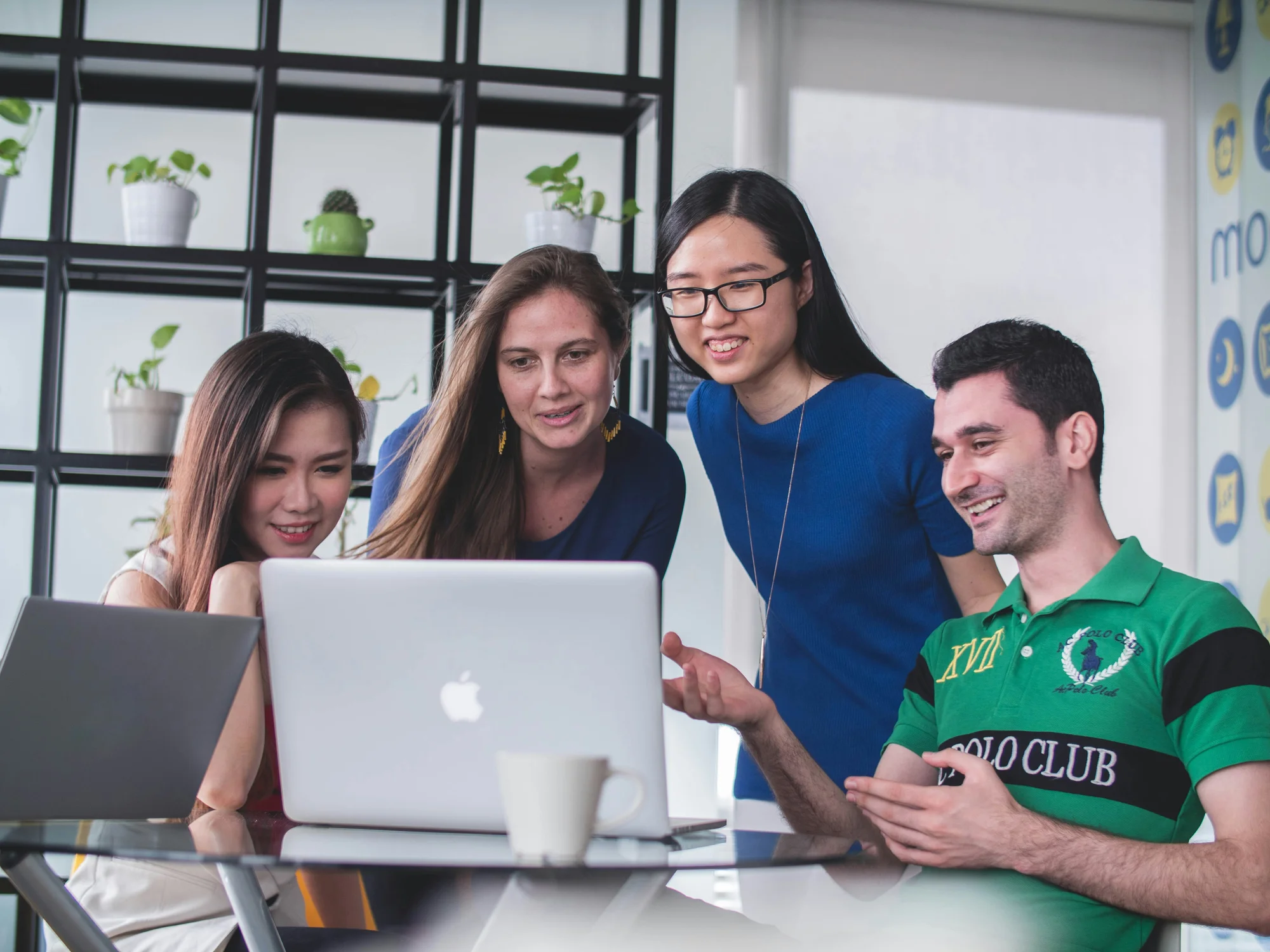Unlocking the door to a new world of communication, culture, and connection starts by mastering China's basic language. The Chinese language, known as 中文 (Zhōngwén), is an integral part of the rich tapestry of one of the world's oldest cultures. With more than 1.4 billion speakers worldwide, learning basic Chinese not only opens up new avenues of communication but also provides a deeper understanding of China's vibrant traditions and intricate social dynamics.
At Traverse, we believe that understanding a language goes beyond mere translation – it is about immersing oneself in the culture, appreciating the nuances, and connecting with people on a deeper level. This is why we emphasize learning the essential Chinese words and phrases, the building blocks of meaningful conversation.
Whether you're planning a trip to China, looking to conduct business with Chinese colleagues, or simply want to engage with Chinese culture, learning the basic Chinese language is your first step. And it's not as daunting as it may seem! Despite its reputation, the grammar of Mandarin Chinese is surprisingly straightforward, with no conjugations, plural forms, genders, or articles.
Here's a quick glimpse of the essential Chinese expressions to get you started:
Short Answers In Chinese - 是 / shì / Yes - 不是 / bù shì / No - 好 / hǎo / Good - 不好 / bù hǎo / Bad
Basic Chinese Phrases - 你好 / nǐ hǎo / Hello - 谢谢 / xiè xie / Thank you - 我爱你 / wǒ ài nǐ / I love you. - 对不起 / duì bù qǐ / I am sorry

Stay with us as we unearth China's basic language, offering an accessible guide for beginners with practical tips, essential vocabulary, and cultural insights. Let's embark on this journey of discovery together – because at Traverse, we're all about making learning an adventure.
Understanding the Chinese Language: Mandarin and Other Dialects
The Chinese language is a vast linguistic landscape teeming with diversity. At the heart of this landscape is Mandarin Chinese, the official language of China, Taiwan, and Singapore, spoken by over 1 billion people worldwide. Alongside Mandarin, a myriad of dialects each with their unique qualities and histories, contribute to the rich tapestry of the Chinese language.
Mandarin Chinese: The Official Language of China
Dubbed as Putonghua, Mandarin Chinese is the lingua franca of China, a common thread that binds the diverse Chinese populace. Recognized as the majority language since the late Ming Dynasty, it only gained official status in 1909. Mandarin Chinese is known for its four distinct tones (or five if you include the neutral tone), adding a layer of complexity to its learning. Example phrases include "你好" (Nǐ hǎo) — Hello, and "你吃饭了吗?" (Nǐ chīfànle ma?) — Have you eaten yet? This dialect is taught and used in all schools, making it the most widespread Chinese dialect.
Other Major Chinese Dialects: Cantonese, Shanghainese, Min, and Taiwanese
While Mandarin reigns supreme in terms of usage, other dialects like Cantonese, Shanghainese, Min, and Taiwanese also play a significant role in the Chinese linguistic sphere. Cantonese, originating from Guangzhou, is the second most widely spread dialect in China, with approximately 73 million speakers. It is largely spoken in Guangdong province, Guangzhou, Hong Kong, Macau, and by the Tanka people in the Pearl River Delta. Cantonese is unique for its six tones, offering a different linguistic experience from Mandarin.
On the other hand, the melodic language of Shanghai, known as Shanghainese or Wu Chinese, is spoken by around 80 million people. This dialect stands out for its eight tones, despite sharing similar grammatical patterns with Mandarin. In Taiwan, many people, especially those from older generations, speak Taiwanese, a dialect with roots in Fujian and eastern Guangdong.
The wide spectrum of these Chinese dialects is a testament to the linguistic diversity of the Chinese culture. At Traverse, we believe that recognizing this diversity enriches your journey of learning Mandarin Chinese, enabling you to appreciate the nuances of regional languages and cultures. Now, imagine the power of unlocking this diversity with science-backed learning methods like ours, which enhances your Chinese character learning and immersion experience.
In the next section, let's delve into the structure of Mandarin Chinese, helping you understand the complexity of Chinese characters, the tonal nature of Mandarin, and the role of Pinyin in learning this fascinating language.
The Structure of Mandarin Chinese: Characters, Tones, and Pinyin
Unraveling the complexities of Mandarin Chinese is like solving a captivating puzzle. The language is built on a unique combination of Chinese characters, tones, and Pinyin. Understanding these elements is crucial to mastering the basic language in China.
The Complexity of Chinese Characters
If Mandarin Chinese were a city, its characters would be the buildings—each unique and essential to the landscape. Each Chinese character represents a word or a part of a word. With tens of thousands of characters, it might seem like a daunting task to learn. However, as we at Traverse believe, by breaking down this complexity into manageable chunks, the path to fluency becomes clearer.
In the Chinese language, there are approximately 214 "radicals"—particular symbols that form all Chinese characters. Following specific stroke orders such as left to right, top to bottom, and horizontal before vertical while writing the characters is crucial. Recognizing patterns in these characters can make memorizing them easier. In order to read and write at an elementary school level, you'll need to learn about 2,500 characters. But don’t worry—once you know these, they can be combined to create many thousands of words.

The Tonal Nature of Mandarin Chinese
Imagine a symphony where the meaning changes based on the pitch of the notes. That's Mandarin in a nutshell. This language is tonal, which means the tone in which a word is spoken can alter its meaning. There are four primary tones and a neutral tone in Mandarin. For instance, the word "mother" (mā 媽) can mean "numb" (má 麻), "horse" (mǎ 馬), "to scold" (mà罵), or a grammar particle that goes at the end of yes and no questions (ma 嗎), depending on the tone used. Mastering these tones is paramount to accurate pronunciation.
Pinyin: A Helpful Tool for English-Speaking Learners
As you navigate this tonal landscape, Pinyin serves as your trusty guide. Developed by Chinese linguists, Pinyin is an official romanization system that converts Chinese characters into a familiar and readable format, using just the 26 letters of the English alphabet. This allows English-speaking learners to learn to speak Chinese without needing to recognize characters immediately.
Pinyin is based on a structure of initials and finals. Each Mandarin syllable comprises an initial (akin to consonants in English) and a final (similar to vowels). For example, in the Mandarin syllable "mā" (meaning mother), "m" is the initial and "ā" is the final. Understanding this structure is essential for correctly pronouncing Mandarin syllables and eventually mastering the tones.

While no one ever said learning Chinese would be easy, it's still entirely possible to pick up a few basic words and phrases to help you get around on your next trip to a Chinese-speaking country. With a grasp of the structure of Mandarin Chinese—characters, tones, and Pinyin—you're well on your way to learning China's basic language.
Essential Mandarin Chinese Words and Phrases
Navigating through the labyrinth of Mandarin Chinese may seem daunting at first, but we at Traverse believe that you can conquer any language barrier with the right tools and a bit of practice. Let's start with the basics. Here are some essential Mandarin words and phrases that can be your stepping stones towards fluency.
Greetings: "nǐ hǎo" (hello), "zǎo shàng hǎo" (good morning), "wǎn shàng hǎo" (good evening)
A warm greeting is the first step to any conversation. In Mandarin, you say "nǐ hǎo" to greet someone, which literally translates to "you good". For a more specific greeting, use "zǎo shàng hǎo" (good morning) or "wǎn shàng hǎo" (good evening).
Expressions of Gratitude: "xiè xiè" (thank you), "bù kè qì" (you're welcome)
Gratitude goes a long way in any culture. The Mandarin phrase for thank you is "xiè xiè". If someone thanks you, the polite response is "bù kè qì", which means "you're welcome" or "it's nothing".
Basic Conversational Phrases: "wǒ bù huì shuō zhōng wén" (I don't speak Chinese), "nǐ huì shuō yīng yǔ ma" (do you speak English?)
When traveling in China, these phrases can be a lifesaver. If you're struggling with Mandarin, simply say "wǒ bù huì shuō zhōng wén" (I don't speak Chinese). To ask if someone speaks English, use the phrase "nǐ huì shuō yīng yǔ ma" (Do you speak English?).
Introductions: "wǒ jiào" (my name is)
Introducing yourself is an important part of any conversation. When meeting someone new, you can say "wǒ jiào [Your Name]" to mean "My name is [Your Name]".
Remember, learning a language is not just about memorizing words and phrases. It's also about understanding the culture and context in which these phrases are used. With that in mind, let's continue exploring the fascinating world of Mandarin Chinese. Stay tuned for our next section where we will delve into the role of technology in learning Mandarin Chinese.
As one Quora user points out, "Learning Mandarin... is a long journey. But with every new word or phrase you learn, you are one step closer to understanding this beautiful language and the culture it represents."
Embrace this journey and remember, every step forward is a victory, regardless of how small it may seem. Whether you're planning a trip to China or simply intrigued by the language, these basic phrases are a great starting point. Enjoy the process and have fun exploring China's basic language.
Utilizing Technology to Learn Mandarin Chinese
As you embark on this adventure to learn China's basic language, one thing remains clear: you don't have to do it alone. The world of technology is at your fingertips, providing you with innovative tools to facilitate your Mandarin learning journey. Apps like Traverse, Google Translate, and Pleco can simplify the process, making it more engaging and effective.
The Role of Learning Apps: Traverse and Others
Learning Mandarin Chinese can seem like setting foot onto a vast and unknown landscape. Each Chinese character is like a mountain peak waiting to be conquered. However, with the right guide, this expedition becomes achievable and enjoyable.
We at Traverse are here to be your sherpa in this language learning journey. Our app guides you through the intricacies of Mandarin, providing you with science-backed learning strategies, and giving you the necessary practice to gain fluency.
Establish clear learning objectives: are you learning Mandarin for travel, business, or interest? Your goals will influence how you use our resources. For instance, if you're learning for travel, you might focus more on conversational Mandarin. Consistency is key in language learning. Use our app during your commute, lunch breaks, or any downtime you have. This ensures regular practice and reinforces what you've learned. Finally, track your progress and celebrate milestones to stay motivated and committed.
Remember, there's no shortcut to language mastery. It takes time, effort, and consistent practice. But with the right tools and strategies, you can make your Mandarin learning journey enjoyable and rewarding.
Google Translate and Pleco: Tools for Translation and Pronunciation
In addition to Traverse, Google Translate is a handy tool for learning Mandarin. You can input English and play an audio of the spoken version in Chinese. This is a great way to familiarize yourself with intonation and pronunciation. Once you arrive at your destination, you can also use the Google Translate mobile app to take photos of Chinese text (say, on a menu or a sign) and have it translated for you on the spot.
Pleco is another very useful app that offers a comprehensive Chinese dictionary, a document reader, and even flashcards for vocabulary practice. It's like having a Mandarin language expert right in your pocket.
In conclusion, technology has made learning Mandarin Chinese more accessible than ever before. From comprehensive learning platforms like Traverse to translation tools like Google Translate and Pleco, you have a multitude of resources to support your language learning journey. So don't hesitate, dive right in and unearth the beauty of China's basic language!
The Benefits of Learning Basic Chinese
Stepping into the world of Mandarin Chinese is like opening a window to a new universe. Despite the language's complexity, the rewards of learning even the basics are immense. They range from enhancing communication with Chinese speakers to gaining a deeper understanding of Chinese culture and tradition.
Enhancing Communication with Chinese Speakers
Imagine being able to converse freely with locals while exploring bustling markets in Beijing, or confidently leading a business meeting with Chinese partners in Shanghai. As Nelson Mandela once said, "If you talk to a man in a language he understands, that goes to his head. If you talk to him in his language, that goes to his heart."
Learning the basic Mandarin words and phrases can help you connect with a diverse range of people. It can pave the way for making friends during your travels, networking in professional settings, or simply conversing with Mandarin-speaking communities in your own city. As we at Traverse often emphasize, the ability to communicate in their language can lead to deeper, more meaningful interactions.
With approximately 1.28 billion Mandarin speakers worldwide, learning even the basic Chinese language can significantly broaden your social and professional network.
Understanding Chinese Culture and Tradition
China is a country with one of the world's oldest cultures. To truly immerse yourself in its rich heritage and diverse traditions, having a grasp of the basic Mandarin language is a significant advantage.
Whether you're visiting the Great Wall of China, delving into the vibrant food markets of Beijing, or being invited into a Chinese home for a traditional meal, knowing some Mandarin will transform you from a mere tourist to an active participant in their culture.
Moreover, learning Mandarin isn't just about language acquisition. It's also about gaining a deeper understanding of China's rich history, vibrant culture, and dynamic economy. As we've noted in our previous articles, being able to communicate in Mandarin opens up a world of opportunities for cultural immersion and personal growth.
In conclusion, learning China's basic language is more than just acquiring a new skill. It's an invitation to a deeper understanding of the world's most populous nation and its people. At Traverse, we believe that every language learner's journey is unique. We invite you to embark on your own adventure to discover the unbeatable benefits of learning the basic Chinese language.
As we wrap up our exploration of the basic language of China, it's important to remember the words of Confucius: "It does not matter how slowly you go as long as you do not stop." This resonates deeply in the journey of learning Mandarin. The process might seem daunting at first, with its unique characters, tonal complexities, and cultural richness. But equipped with the right strategies and tools, mastering Mandarin is entirely achievable.
At Traverse, we are committed to providing you with those tools. Our innovative approach, which combines mind mapping, spaced repetition, and connected note-taking, empowers language learners to encode, retain, and apply their Mandarin skills effectively. Our partnership with Mandarin learning resources and apps like Duolingo helps you practice and refine your language skills in a fun and engaging way.
Learning Mandarin is not just an academic endeavor. It's a journey that unlocks a deeper understanding of one of the world's oldest and most fascinating cultures. As China's economy continues to grow, Mandarin has become an increasingly vital asset, opening doors to numerous opportunities in thriving sectors such as electronics, technology, and manufacturing.
Remember, every journey starts with a single step, and every word you learn brings you one step closer to mastering Mandarin. Whether it's learning to say "nǐ hǎo" (hello) or understanding the difference between "shì" (yes) and "bù shì" (no), every small victory is worth celebrating.
In conclusion, learning China's basic language is a compelling and enriching journey. Embrace the process, practice patience and consistency, and celebrate your progress. At Traverse, we are with you every step of the way, providing you with the tools and resources you need to succeed.
As you embark on this exciting journey to learn Mandarin, remember that it's not just about the destination, but also about the journey itself. Enjoy the process, and watch as each new word, phrase, and character you learn brings you closer to understanding the rich and beautiful language that is Mandarin Chinese.
And as you continue your Chinese language learning adventure, don't forget to share your progress and experiences with us. After all, at Traverse, we are not just a company, but a community of language learners, eager to support each other on our respective journeys.
Happy learning, and 加油 (jiā yóu) – keep going!

